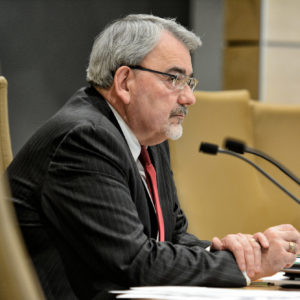Budget update
Earlier than any session in recent memory, the Senate has passed an entire state budget. The budget checks in at just over $45 billion over the next two years. For more detailed information on the Senate Republican Advancing Minnesota budgets, click here. Among the notable provisions:
- A $900 million pro-growth tax plan brings permanent relief to 81% of Minnesota taxpayers. The package includes the first income tax cut in nearly two decades, phases out the tax on Social Security income, and provides a tax credit for student loan debt. It also brings tax relief to small businesses — boosting the economies of Minnesota’s regional centers and small towns. Altogether, 2.3 million households and 350,000 seniors will see relief.
- A comprehensive transportation budget that invests $1.3 billion over the next two years, and $3.6 billion over a ten-year period, prioritizing the safety and reliability of roads and bridges across Minnesota. More than 8,800 lane miles and 200 bridges will be repaired or replaced under this plan — without raising taxes.
- An education budget that, over the next two years, invests $18.5 billion in K-12 students, teachers, and schools – ensuring all Minnesota students can receive an education that prepares them for the jobs of tomorrow. In addition, Senate Republicans spend $3.17 billion on higher education, including an increased funding for the University of Minnesota, Minnesota State campuses, and community colleges across Greater Minnesota.
- A $208 million jobs bill that boosts funding for rural broadband access, the Minnesota Investment Fund, and the Job Creation Fund, and places an emphasis on public-private partnerships that are proven job creators.
- A $274.1 million environment and natural resources budget that eliminates wasteful spending, streamlines environmental regulations, and keeps our unparalleled natural resources safe and clean.
- A health and human services budget aimed at prioritizing programs that help Minnesotans with disabilities, the elderly, and at-risk youth living in poverty, with a $14 billion health and human services budget — an increase of $2.2 billion. The bill takes steps toward addressing serious issues facing our state, such as opioid addiction and sex trafficking.
I know there is concern over the size of the budget. At the end of the day, the governor does need to sign off as well. Budgets passed by the legislature have tried to include no growth in departments themselves in order to try and control growth through the tails. More on future needs and plans next week.
Conference committees
 Because the budget bills that have passed the Senate differ – often significantly – from the bills that passed the House, joint conference committees must meet to find agreeable language. In this process, I have been appointed to serve on the conference committees for the omnibus agriculture and housing budget bill and the omnibus K-12 education bill. Conference committees will begin meeting this week and continue until an agreement is reached. Upon reaching an agreement, both legislative bodies will vote on those agreements before sending them to the governor for his signature or veto. The Minnesota Constitution mandates that this year’s legislative session must adjourn by May 22.
Because the budget bills that have passed the Senate differ – often significantly – from the bills that passed the House, joint conference committees must meet to find agreeable language. In this process, I have been appointed to serve on the conference committees for the omnibus agriculture and housing budget bill and the omnibus K-12 education bill. Conference committees will begin meeting this week and continue until an agreement is reached. Upon reaching an agreement, both legislative bodies will vote on those agreements before sending them to the governor for his signature or veto. The Minnesota Constitution mandates that this year’s legislative session must adjourn by May 22.
Teacher licensure reform
Minnesota is home to some of the best and brightest students in the nation, but we are experiencing a lack of qualified teachers – particularly in rural school districts. One significant factor in this shortage is the state’s cumbersome and inconsistent teacher licensing process. In 2016, Minnesota’s Office of the Legislative Auditor (OLA) issued a scathing critique of Minnesota’s teacher licensure system. This week, the Senate passed a bill that will fundamentally alter the way teachers are licensed in our state – all in an effort to attract and retain great teachers statewide. Among its many provisions, the bill:
- Establishes a new “Professional Educator Licensing and Standards Board,” which will take on the responsibilities currently shared by the Board of Teaching and the Department of Education
- Creates a “tiered” licensing system, allowing for a clearer and more affordable pathway into the teaching profession. This new system will empower local school districts to take on more responsibility for educator hiring and development. It will establish consistent standards that will streamline the licensing process for both in- and out-of-state applicants
